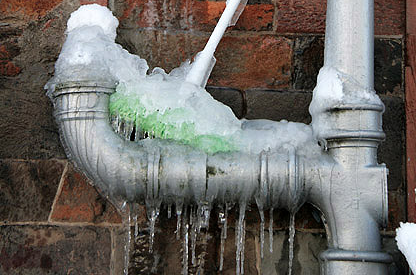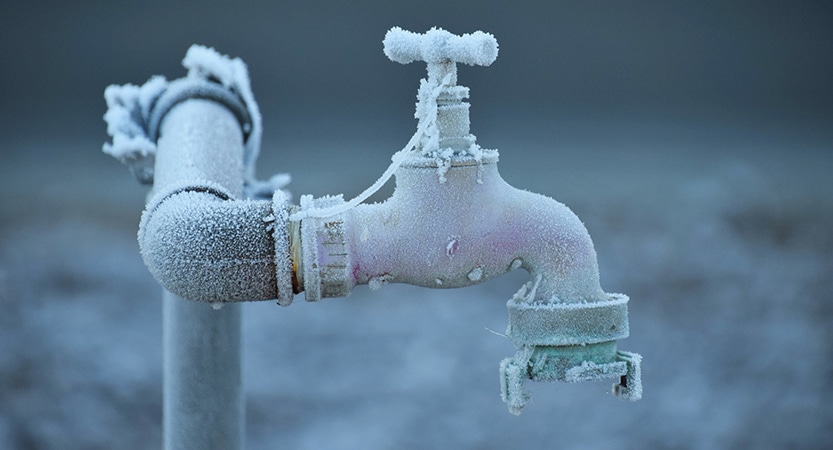How to Prevent Frozen Plumbing in Cold Weather: Pro Guidance
How to Prevent Frozen Plumbing in Cold Weather: Pro Guidance
Blog Article
Each person is bound to have their personal perception in relation to Preventing and dealing with frozen pipes.

Winter can wreak havoc on your plumbing, specifically by freezing pipes. Below's how to prevent it from occurring and what to do if it does.
Introduction
As temperatures drop, the risk of frozen pipes boosts, possibly causing expensive repair work and water damages. Understanding how to prevent frozen pipes is essential for homeowners in cold climates.
Understanding Frozen Pipelines
What causes pipes to ice up?
Pipes freeze when exposed to temperatures below 32 ° F (0 ° C) for expanded periods. As water inside the pipelines ices up, it increases, putting pressure on the pipeline walls and possibly causing them to burst.
Dangers and damages
Frozen pipelines can result in water disturbances, property damage, and pricey fixings. Burst pipes can flood homes and create considerable structural damage.
Signs of Frozen Water Lines
Determining icy pipes early can avoid them from rupturing.
Exactly how to recognize frozen pipes
Try to find decreased water circulation from faucets, unusual smells or noises from pipes, and visible frost on revealed pipes.
Prevention Tips
Shielding prone pipes
Wrap pipelines in insulation sleeves or utilize warm tape to protect them from freezing temperature levels. Focus on pipes in unheated or exterior locations of the home.
Home heating strategies
Maintain interior areas effectively warmed, particularly areas with plumbing. Open cupboard doors to enable warm air to circulate around pipelines under sinks.
Securing Outdoor Pipes
Yard tubes and exterior taps
Disconnect and drain pipes yard tubes before winter. Set up frost-proof spigots or cover outside faucets with shielded caps.
What to Do If Your Pipes Freeze
Immediate activities to take
If you suspect frozen pipelines, maintain faucets available to eliminate pressure as the ice melts. Make use of a hairdryer or towels taken in warm water to thaw pipes slowly.
Long-Term Solutions
Architectural changes
Consider rerouting pipelines far from outside wall surfaces or unheated areas. Include added insulation to attic rooms, basements, and crawl spaces.
Upgrading insulation
Buy top quality insulation for pipes, attics, and wall surfaces. Correct insulation assists maintain consistent temperature levels and reduces the threat of icy pipes.
Verdict
Avoiding icy pipelines calls for aggressive steps and quick actions. By recognizing the causes, indications, and safety nets, house owners can shield their plumbing throughout winter.
Helpful Tips to Prevent Frozen Pipes this Winter
UNDERSTANDING THE BASICS: WHY PIPES FREEZE AND WHY IT’S A PROBLEM
Water freezing inside pipes is common during the winter months, but understanding why pipes freeze, and the potential problems it can cause is crucial in preventing such incidents. This section will delve into the basics of why pipes freeze and the associated problems that may arise.
THE SCIENCE BEHIND FROZEN PIPES
When water reaches freezing temperatures, it undergoes a physical transformation and solidifies into ice. This expansion of water as it freezes is the primary reason pipes can burst. As the water inside the pipe freezes, it expands, creating immense pressure on the walls. If the pressure becomes too great, the pipe can crack or rupture, leading to leaks and water damage.
FACTORS THAT CONTRIBUTE TO PIPE FREEZING
Low Temperatures: Extremely cold weather, especially below freezing, increases the risk of pipes freezing. Uninsulated or Poorly Insulated Pipes: Pipes located in unheated areas, such as basements, crawl spaces, or attics, are more prone to freezing. Insufficient insulation or lack of insulation altogether exacerbates the problem. Exterior Wall Exposure: Pipes running along exterior walls are susceptible to freezing as they encounter colder temperatures outside. Lack of Heating or Temperature Regulation: Inadequate heating or inconsistent temperature control in your home can contribute to frozen pipes. PROBLEMS CAUSED BY FROZEN PIPES
- Pipe Bursting: As mentioned earlier, the expansion of water as it freezes can cause pipes to burst, resulting in significant water damage.
- Water Damage: When pipes burst, it can lead to flooding and water damage to your property, including walls, ceilings, flooring, and personal belongings.
- Structural Damage: Prolonged exposure to water from burst pipes can compromise the structural integrity of your home, leading to costly repairs.
- Mold and Mildew Growth: Excess moisture from water damage can create a favorable environment for mold and mildew growth, posing health risks to occupants.
- Disrupted Water Supply: Frozen pipes can also result in a complete or partial loss of water supply until the issue is resolved.
WHY CERTAIN PIPES ARE MORE PRONE TO FREEZING
- Location: Pipes located in unheated or poorly insulated areas, such as basements, crawl spaces, attics, or exterior walls, are at higher risk of freezing.
- Exterior Pipes: Outdoor pipes, such as those used for irrigation or exposed plumbing, are particularly vulnerable to freezing as they are directly exposed to the elements.
- Supply Lines: Pipes that carry water from the main water supply into your home, including the main water line, are critical to protect as freezing in these lines can affect your entire plumbing system.
- Underground Pipes: Pipes buried underground, such as those connected to sprinkler systems or outdoor faucets, can be susceptible to freezing if not properly insulated.
https://busybusy.com/blog/helpful-tips-to-prevent-frozen-pipes-this-winter/

We had been shown that write-up on 6 Ways to Prevent Frozen Pipes through an acquaintance on a different website. Sharing is caring. Helping others is fun. I truly appreciate reading our article about How to prepare your home plumbing for winter weather.
Book-Now Report this page